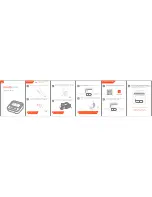
Chapter 6
Configuration
26
•
TCP protocol with port
— the rule will be valid only for the TCP protocol and the
given port. The protocol and the port define particular service (e.g. SMTP, WWW,
etc.) The port number
0
(zero) means all ports — so all services using the TCP
protocol.
•
UDP protocol with port
— the rule will be valid only for the UDP protocol and the
given port. The similar considerations are valid as in the case of the TCP protocol.
Note
After installation of
Kerio Network Monitor
, there are some predefined groups of ad-
dresses in the
IP Addresses
tab. They are intended to maximally simplify the program
configuration — so that it should be usable with the default settings in the highest pos-
sible number of standard situations,
•
Rules for all addresses (
<all addresses>
) with specified protocols and ports. These
rules specify the services, which are running in the local network but should be mon-
itored as the Internet ones (typically the proxy server and the mail server)
If your network is connected to the Internet via proxy server, the rule for the proxy
server should be defined (otherwise no data will be measured because the communi-
cation between the client and the proxy server takes place only in the local network).
The default rule supposes the standard port
3128
(
TCP3128
). If the proxy server in
your network is running on another port (e.g.
80
or
8080
), correct the port number
in this rule.
If the mail server is running on the computer, which is also the Internet gateway, then
Kerio Network Monitor
can not measure the volume of sent and received mail, because
it is communication within the local network. For this reason there are predefined
rules for the SMTP (
TCP25
), POP3 (
TCP110
) and IMAP (
TCP143
) protocols.
•
Rules for private ranges of IP addresses (
10.0.0.0
,
172.16.0.0
and
192.168.0.0
).
These addresses are reserved for private network and can not appear anywhere in
the Internet, therefore
Kerio Network Monitor
automatically supposes, that it deals
with local network.
•
Rule for adapters, which are the packets captured on (
<used interfaces>
).
As it was already described earlier (see chapter
5.3
), the packets should be monitored
on the interfaces connected to the local network (so that
Kerio Network Monitor
could
detect IP addresses of individual computers in the network). Therefore it is supposed
that the adapters, which were chosen for packets monitoring, are connected to the
local network (domain
LAN
).
Summary of Contents for Network Monitor
Page 1: ...User s Guide Kerio Technologies...
Page 8: ...Chapter 2 Quick Checklist 8...
Page 14: ...Chapter 3 Technical Information 14...
Page 18: ...Chapter 4 Installation 18...
Page 40: ...Chapter 6 Configuration 40...
Page 66: ...Chapter 8 Web Interface 66...
Page 70: ......
















































